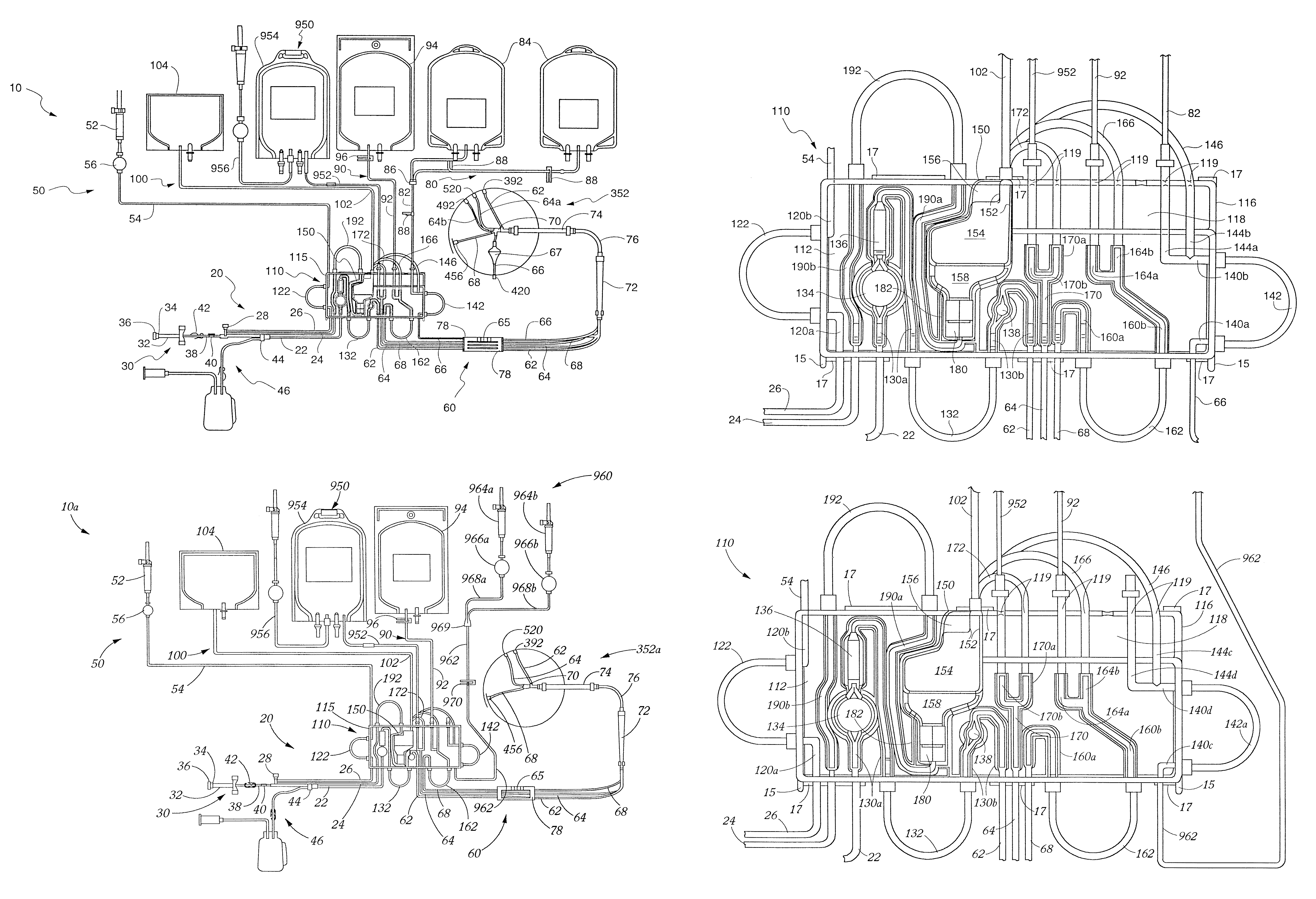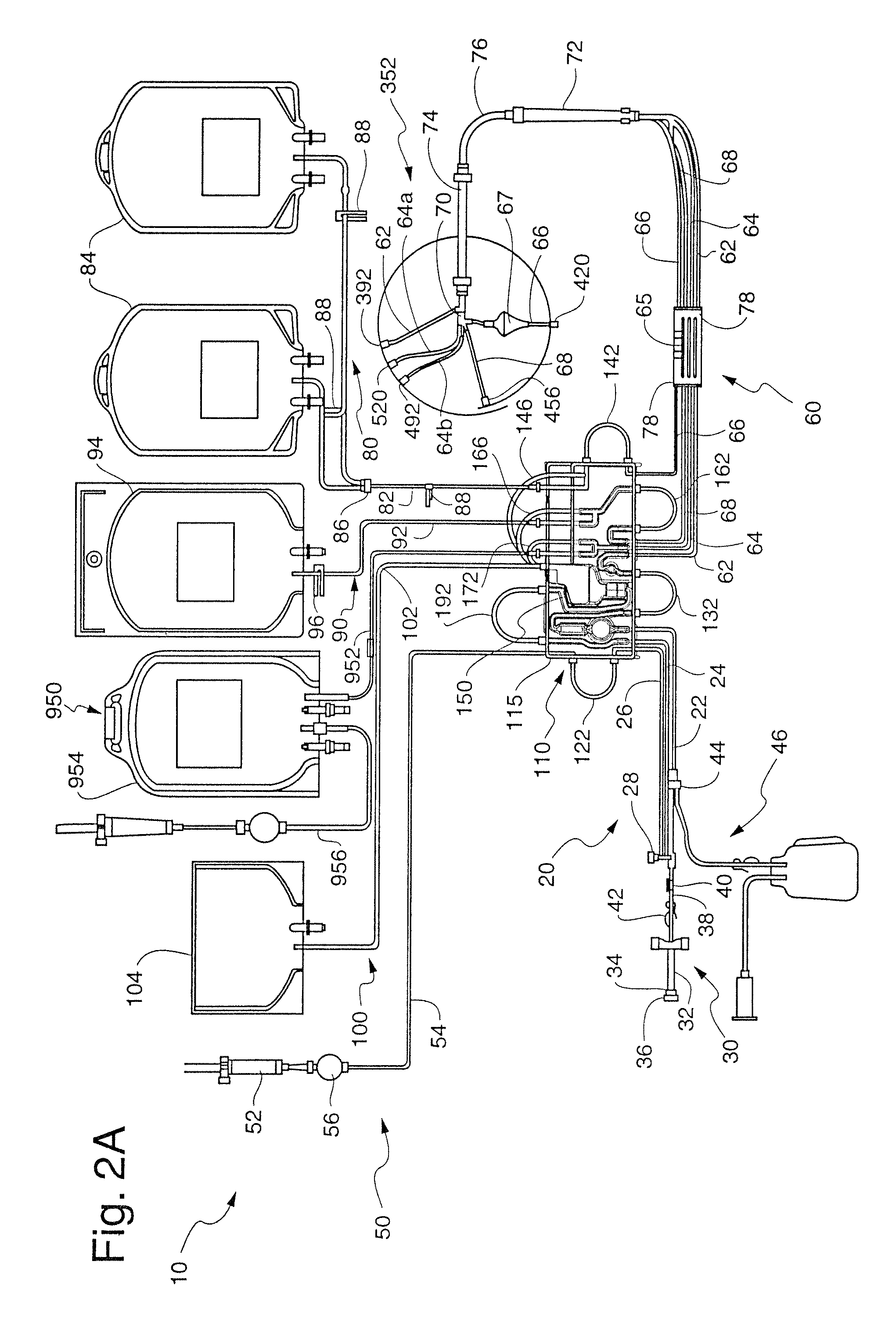Extra-corporeal blood processing method and apparatus based on donor characteristics
a technology of extracorporeal blood and characteristics, applied in the direction of centrifuges, separation processes, filtration separation, etc., can solve the problem that donors typically have a limited amount of tim
- Summary
- Abstract
- Description
- Claims
- Application Information
AI Technical Summary
Benefits of technology
Problems solved by technology
Method used
Image
Examples
first embodiment
[0219]Once the flow of blood reaches the blood processing vessel 352, the rotational speed of the channel housing 204 is increased from about 1,500 RPM to about 2,500 RPM for a rotor diameter of about 10″, preferably about 2000 RPM, such that blood being provided to the blood processing vessel 352 will be separated into the various blood component types even during the priming procedure. Once again, in this “second stage”, the rotational velocity need not be fixed, but may vary. In order for a blood prime to be successful in the first embodiment, a flow must be provided to the control port assembly 488 before any RBCs flows beyond the RBC dam 232 in a clockwise direction. This is again provided by the configuration of the channel 208. When there is no control port assembly 488 (see FIGS. 2C-2D), a plasma flow first desirably reaches the RBC / control port 520 before RBCs flow over or beyond the RBC dam 232 (although this is less important in this embodiment as described below).
[0220]I...
second embodiment
[0226]Platelet-poor plasma is less dense than the platelets and would continue to flow in a clockwise direction through the second stage 316 to the plasma outlet port assembly 452 where at least some of the plasma is removed from the blood processing vessel 352. This plasma may be collected and / or returned to the donor / patient 4. However, some of the plasma flow continues in the clockwise direction into and through the third stage 320 to the control port assembly 488 to provide for automatic control of the location of the interface between the RBCs and platelets in the above-described manner. As described further below, preferably all of the plasma which flows over the RBC dam 232 in the second embodiment herein (FIGS. 2C-2D) would be platelet-poor and flow to the plasma outlet port assembly 452 as above, as well as to the RBC / control outlet port 520 even though there is no control port assembly 488.
Platelet / RBC (and Potential Plasma) Collection
[0227]As noted, a preferred blood aphe...
PUM
| Property | Measurement | Unit |
|---|---|---|
| volumes | aaaaa | aaaaa |
| volumes | aaaaa | aaaaa |
| pressures | aaaaa | aaaaa |
Abstract
Description
Claims
Application Information
 Login to View More
Login to View More - R&D
- Intellectual Property
- Life Sciences
- Materials
- Tech Scout
- Unparalleled Data Quality
- Higher Quality Content
- 60% Fewer Hallucinations
Browse by: Latest US Patents, China's latest patents, Technical Efficacy Thesaurus, Application Domain, Technology Topic, Popular Technical Reports.
© 2025 PatSnap. All rights reserved.Legal|Privacy policy|Modern Slavery Act Transparency Statement|Sitemap|About US| Contact US: help@patsnap.com



